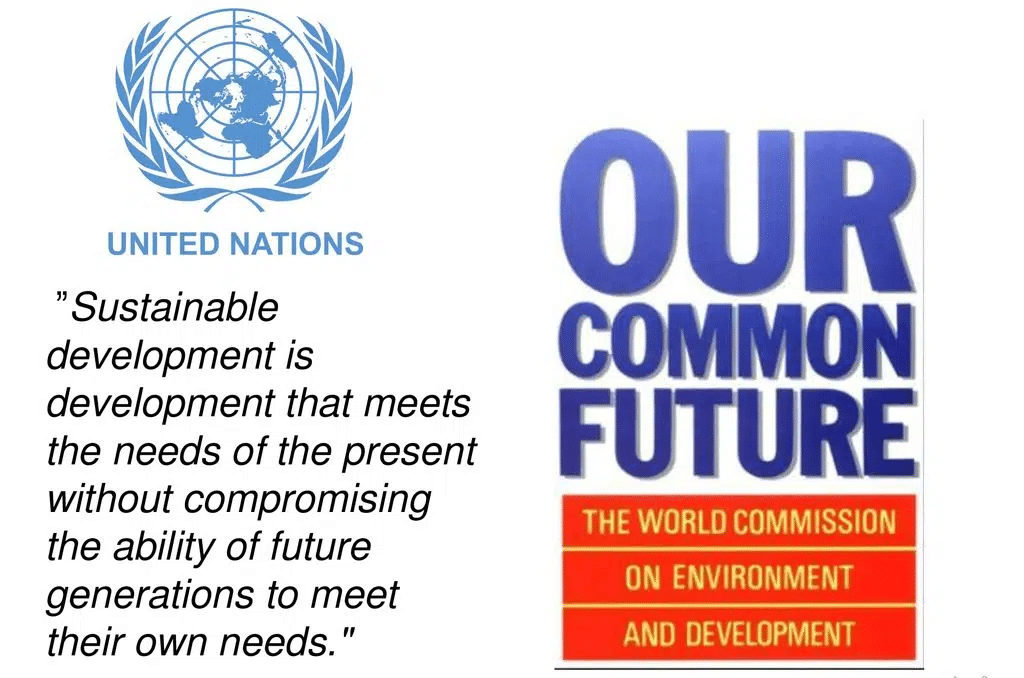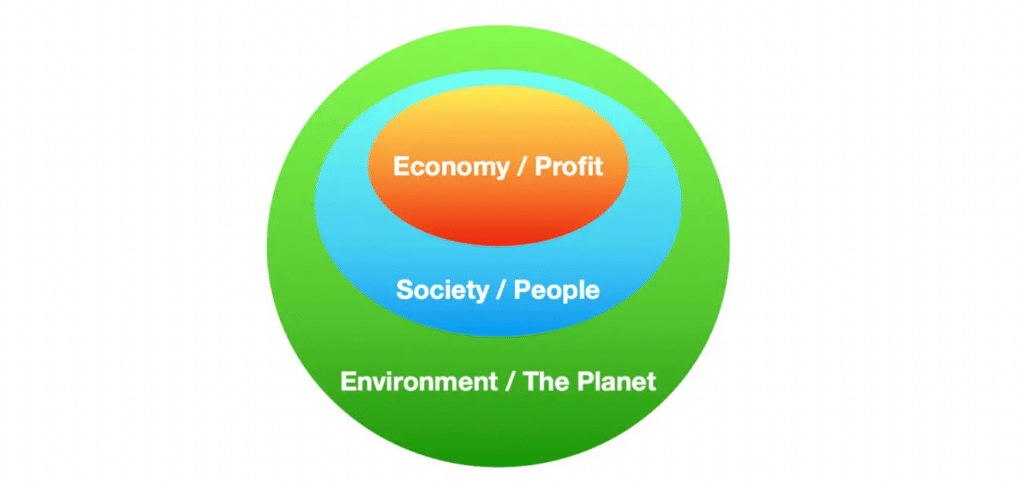Sustainability has gained a lot of importance in recent years, due to the effects of human activity on the environment and our ability to sustain our way of life over the long term. Often, it is understood as environmental sustainability only but sustainability is much more than that.
There are three pillars of sustainable development: The social pillar, the environmental pillar, and the economic pillar. It is essential to take these three pillars equally into account while designing a sustainable development plan

History Of The Three Pillars Of Sustainability
The concept of sustainable development and the concept of three pillars emerged in the late 20th century as a response to the growing recognition of the environmental and social impacts of economic development.
It was first mentioned in the Brundtland Report, also known as Our Common Future, published in 1987 by the World Commission on Environment and Development headed by Gro Harlem Brundtland, Prime Minister of Norway.
The concept of sustainable development was talked about in this report through the discussion of climate change, economic development, and international goals.
Excerpt from the report
“ Sustainable development is a development that meets the needs of the present without compromising the ability of future generations to meet their own needs. It contains within it two key concepts:
- The concept of ‘needs’, in particular the essential needs of the world’s poor, to which overriding priority should be given;
- The idea of limitations imposed by the state of technology and social organization on the environment’s ability to meet present and future needs.

Thus the goals of economic and social development must be defined in terms of sustainability in all countries – developed or developing, market-oriented or centrally planned. Interpretations will vary, but must share certain general features and must flow from a consensus on the basic concept of sustainable development and on a broad strategic framework for achieving it.”
This report laid the groundwork for sustainable development by emphasizing the need to balance economic development, social well-being, and environmental protection.
In 1994, John Elkington, a British author and business strategist, introduced the concept of the triple bottom line in his book, “Cannibals with Forks: The Triple Bottom Line of 21st Century Business.” He suggested that companies evaluate their success in terms of social and environmental performance in addition to financial performance. The triple bottom line, commonly referred to as the three pillars of sustainability, was born.
The three pillars of sustainability have since become a widely accepted framework for sustainable development, embraced by governments, businesses, and organizations around the world. The concept has been further developed, with different organizations adding their interpretations and variations.
An interpretation recognises the three pillars of sustainability in a hierarchical form where the economy is contained in the society and the society is itself contained inside the environment.

Environmental Pillar
Environmental sustainability is the pillar that is most commonly associated with sustainability. It refers to the ability of natural systems to maintain themselves and provide the resources and services that humans rely on.
Environmental sustainability involves protecting the planet’s ecosystems, conserving natural resources, and minimizing pollution and waste.
An aspect of environmental sustainability is the promotion of renewable energy sources such as solar, wind, and hydroelectric power. These energy sources are sustainable because they do not rely on the depletion of finite resources like fossil fuels. They also produce fewer greenhouse gas emissions, which contribute to climate change.
Another aspect of environmental sustainability is the promotion of sustainable agriculture. This involves using practices that reduce harmful chemicals, promote biodiversity, and preserve soil health.
Preserving and protecting biodiversity is another aspect of environmental sustainability. This involves protecting natural habitats, conserving endangered species, and promoting the restoration of ecosystems.
Economic Pillar
Economic Pillar refers to the ability of societies to maintain their economic systems over time. This includes ensuring that economic growth is sustainable and that it does not come at the expense of future generations.
Economic sustainability also involves creating economic opportunities that are accessible to all members of society, regardless of income or social status.
To achieve economic sustainability there must be a balance between economic growth, social progress, and environmental protection. We must ensure that our economic systems are resilient and adaptable to changing circumstances. This can involve investing in education and training programs, creating opportunities for entrepreneurship and innovation, and promoting sustainable business practices that prioritize social and environmental outcomes alongside economic ones. My businesses are working towards incorporating sustainability into their development plan this helps them in creating a positive image in the mind of consumers and also reduce their carbon footprint.
Social Pillar
Social Pillar refers to the ability of societies to maintain social cohesion, equality and peace among communities over time. This includes ensuring that everyone has access to the resources and services they need to thrive, such as food, shelter, healthcare, education, and cultural opportunities.
To elaborate further, social sustainability primarily focuses on these three key elements:
The first component of social sustainability is centred around peace, security, and human rights. These aspects are of paramount importance as conflicts, unethical practices, and criminal activities are detrimental to the environment. For instance, during wars, pollutants get released into the environment, and factories engaged in unethical practices also contribute to environmental degradation.
The second aspect of social sustainability is related to access to healthcare. Health issues are interlinked with economic and environmental aspects. The World Health Organization (WHO) regards sustainability as impossible to achieve without paying attention to health-related concerns.
The third aspect of social sustainability is social justice and equal opportunity. This includes providing education and training opportunities for all members of society, and ensuring that healthcare services are accessible and affordable to everyone. Also, everyone has equal access to resources and opportunities regardless of their gender, race, ethnicity, or socio-economic background.

In conclusion, the three pillars of sustainability provide a framework for understanding the key dimensions of sustainability and the interconnectedness of social, economic, and environmental systems.
Achieving sustainability requires us to address all three pillars simultaneously, and to prioritize the needs and well-being of all members of society. By working together to promote sustainability and sustainable practices, we can create a more resilient, equitable, and sustainable future for ourselves and future generations.








